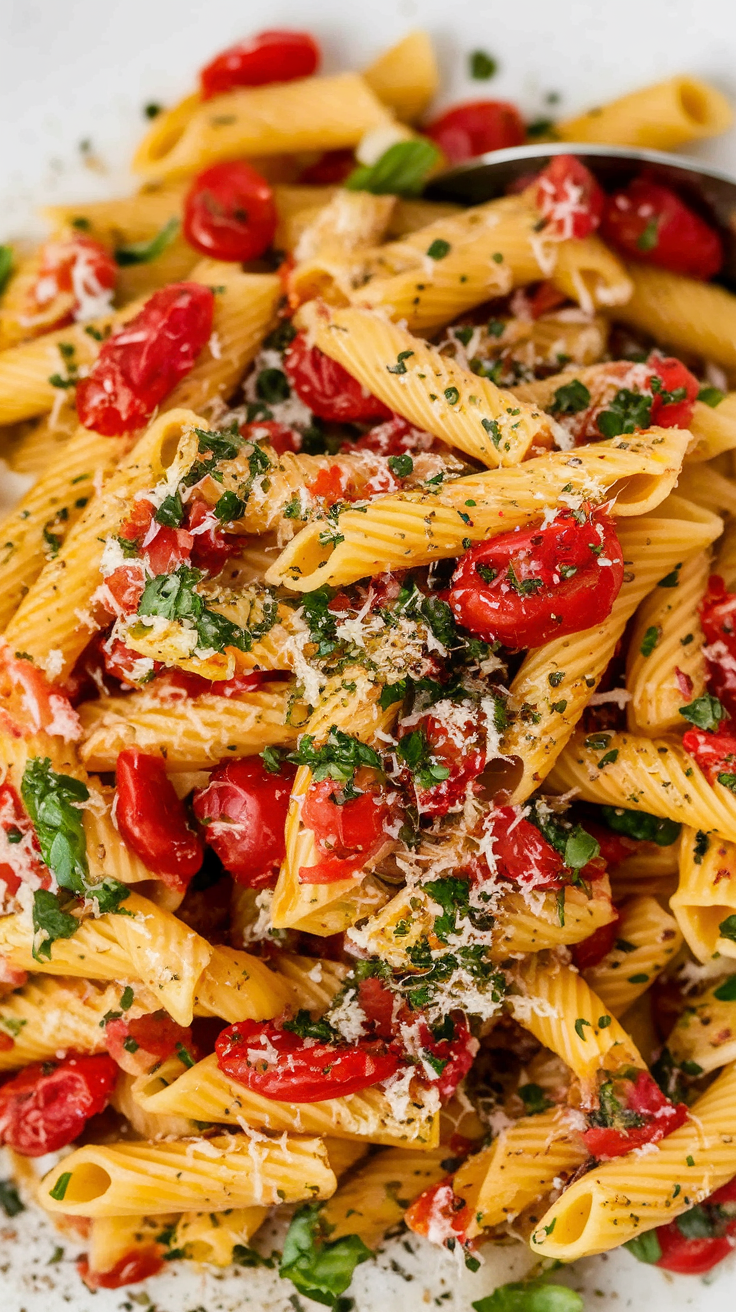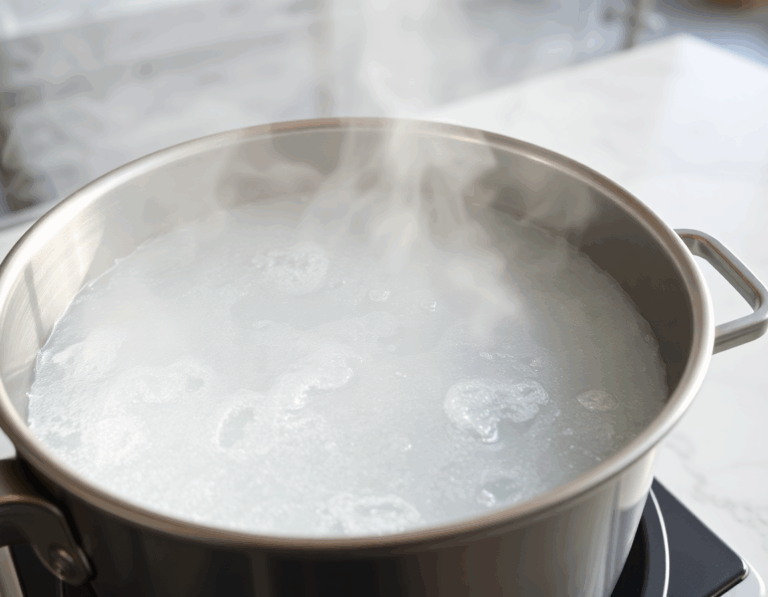Oh, the joy of discovering a dish that feels like a warm hug! This Bruschetta Chicken Pasta is a whirlwind of flavors—garlic whispers, tomato tang, and basil dreams, all dancing around tender chicken and pasta. It’s like your taste buds are taking a vacation to Italy, and let’s be honest, who doesn’t want that?
Steps
- Bring a large pot of heavily salted water to a boil, then add the pasta and cook until it reaches an al dente texture as per the package instructions.
- While the pasta is cooking, chop the tomatoes and basil, mince the garlic, and shred the parmesan cheese.
- In a large bowl, combine the tomatoes, basil, garlic, shredded parmesan, olive oil, balsamic vinegar, salt, and pepper, stirring occasionally to blend the flavors.
- Once the pasta is done, use a slotted spoon to transfer it directly from the pot to the bowl with the tomato mixture.
- Mix the pasta and bruschetta thoroughly, letting it sit for 5-10 minutes to allow the sauce to thicken, stirring from time to time.
- Adjust the seasoning if necessary, then serve the pasta with additional basil, parmesan cheese, and black pepper as desired.
Ingredients
- 8 oz. pasta (any type, such as penne or spaghetti)
- 2 cloves garlic, minced
- 1/4 cup extra-virgin olive oil
- 1 tablespoon balsamic vinegar
- 1/2 cup fresh basil leaves, cut chiffonade or roughly chopped
- 2 cups chopped tomatoes (any kind, such as cherry or Roma)
- 1/2 cup shredded parmesan cheese
- 1/2 teaspoon kosher salt
- 1/4 teaspoon black pepper
Nutritional Values
Calories: 1596kcal | Carbohydrates: 188g | Protein: 52g | Fat: 72g | Saturated Fat: 16g | Cholesterol: 36mg | Sodium: 836mg | Potassium: 1292mg | Fiber: 12g | Sugar: 16g | Vitamin A: 3504IU | Vitamin C: 44mg | Calcium: 700mg | Iron: 4mg
FAQ
- Can I prepare Bruschetta Pasta in advance?
- Yes, while this dish is best enjoyed a few minutes after preparation when it’s still warm, you can make it ahead of time. Leftovers can be refrigerated and served cold or reheated, but it’s recommended to consume them within 24 hours to prevent sogginess.
- What types of pasta are suitable for this recipe?
- You can use any kind of pasta for Bruschetta Pasta. Traditional white pasta, like penne or spaghetti, is ideal for creating a rich sauce due to its starch content. However, whole wheat or gluten-free options such as chickpea or rice pasta can also be used.
- How can I make this recipe vegan?
- To make Bruschetta Pasta vegan, simply substitute the parmesan cheese with a vegan alternative or omit it altogether. Ensure any substitute used does not contain animal rennet for a fully vegan dish.
- What can I serve with Bruschetta Pasta to make it a heartier meal?
- To bulk up the meal, consider adding vegetarian proteins like chickpeas or white beans, or include fresh mozzarella or burrata. For a non-vegetarian option, pair the pasta with grilled chicken, shrimp, or seafood such as seared scallops or oven-fried catfish.
- How can I ensure the sauce thickens properly?
- Allow the pasta to rest with the bruschetta mixture for 5-10 minutes. This waiting period helps the sauce thicken. If using particularly watery tomatoes, consider blotting them dry before mixing to achieve a thicker, more flavorful sauce.
Tips
- Prepare the tomato and basil mixture ahead of time to allow the flavors to meld and the tomatoes to soften, but don’t let it sit for more than two hours to prevent it from becoming soggy.
- If your tomatoes are particularly juicy, consider blotting them dry with a paper towel before adding them to the bowl to ensure a thicker, more flavorful sauce.
- Use a high-quality aged balsamic vinegar for a richer, sweeter flavor that enhances the overall taste of the pasta.
- For those looking to make this dish vegan, substitute the parmesan cheese with a vegan-friendly alternative or simply omit it.
Equipment
- Large Mixing Bowl – A large bowl to mix the bruschetta ingredients and pasta.
- Slotted Spoon – Useful for transferring pasta from the pot to the bowl while retaining some pasta water.
- Chiffonade Knife – For cutting basil into thin strips, though a regular knife can also suffice.
- Pasta Pot – A large pot suitable for boiling pasta, if not already available.
- High-Quality Balsamic Vinegar – Aged balsamic vinegar, if you want to enhance the flavor profile.

